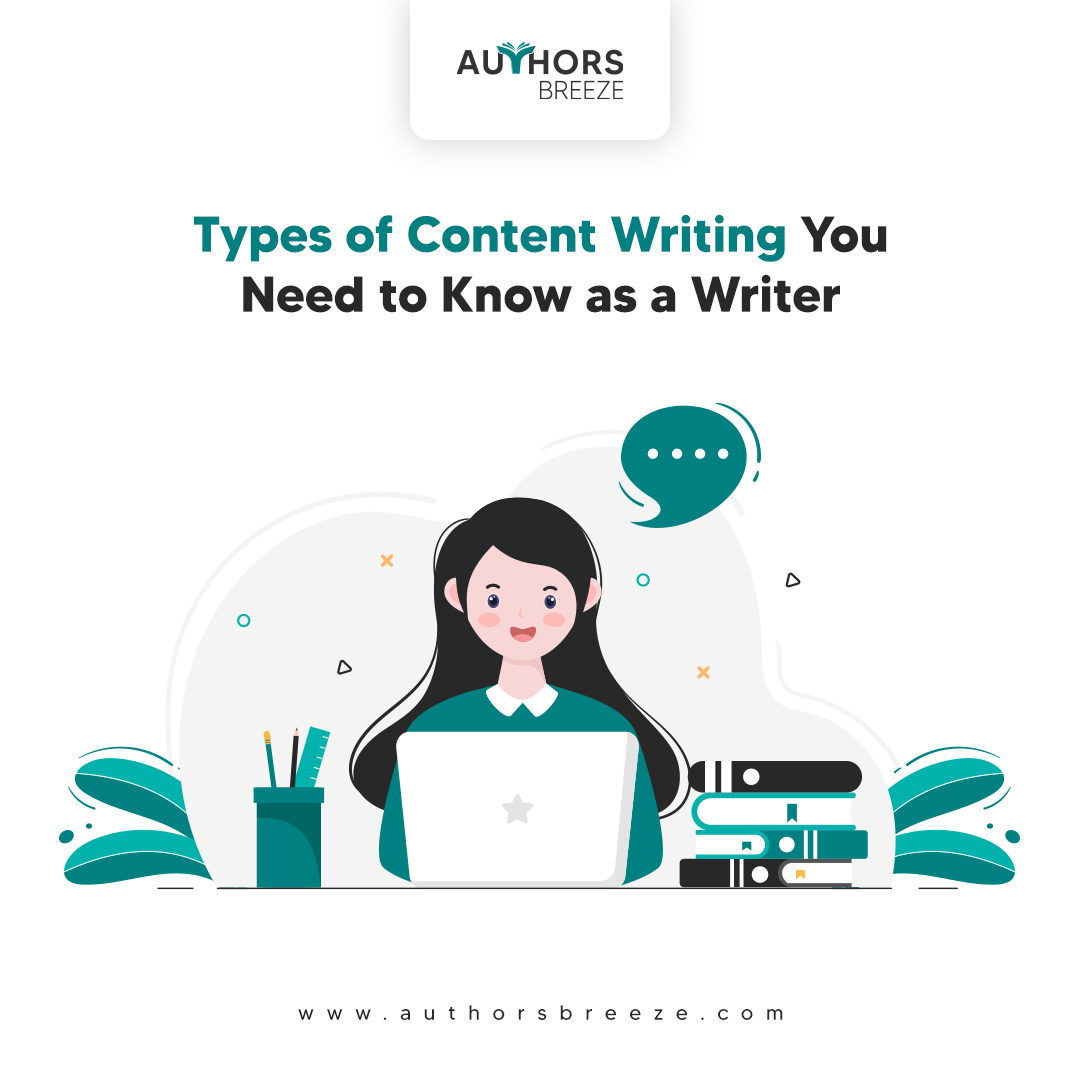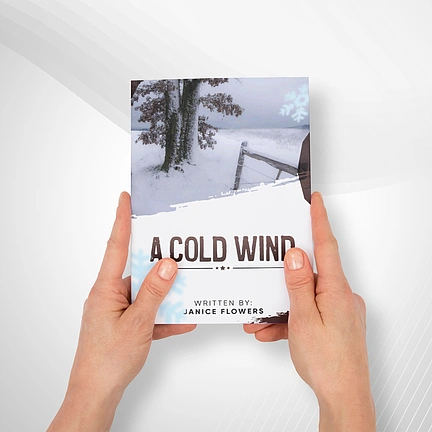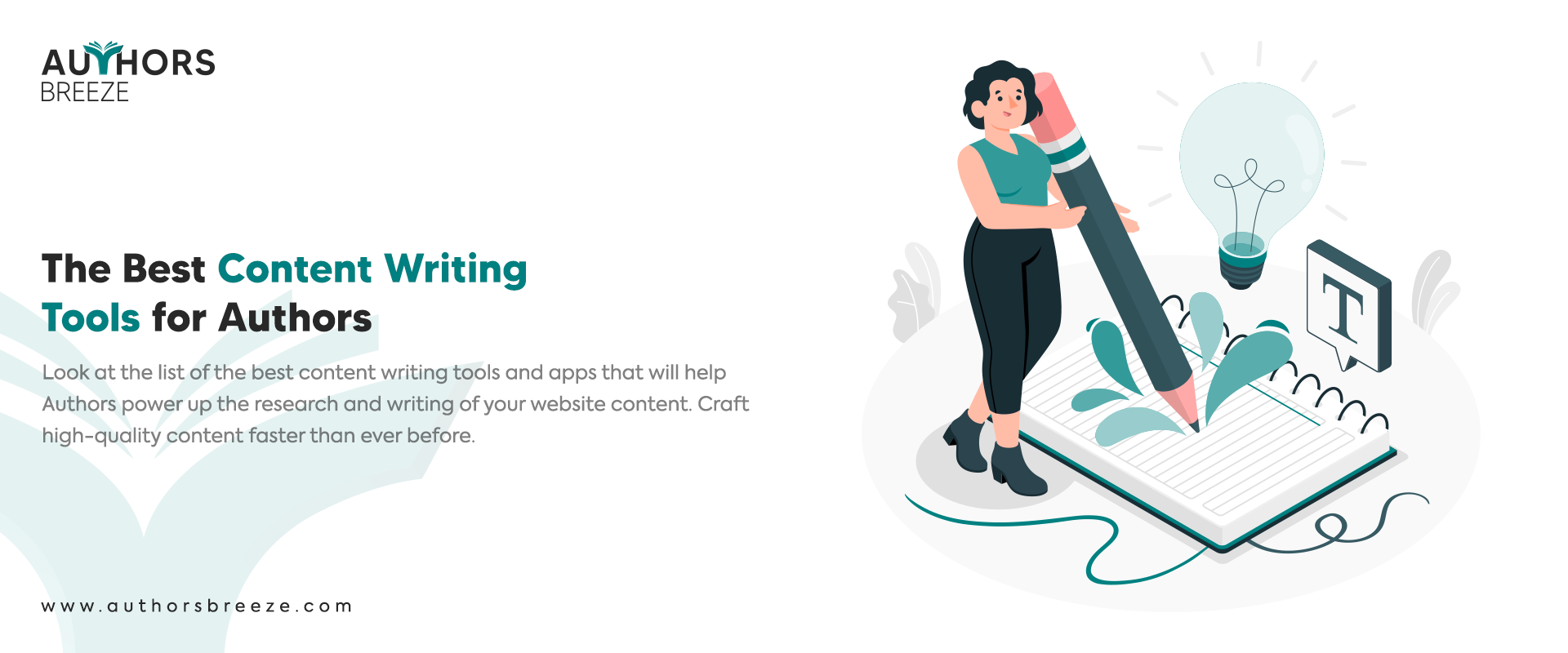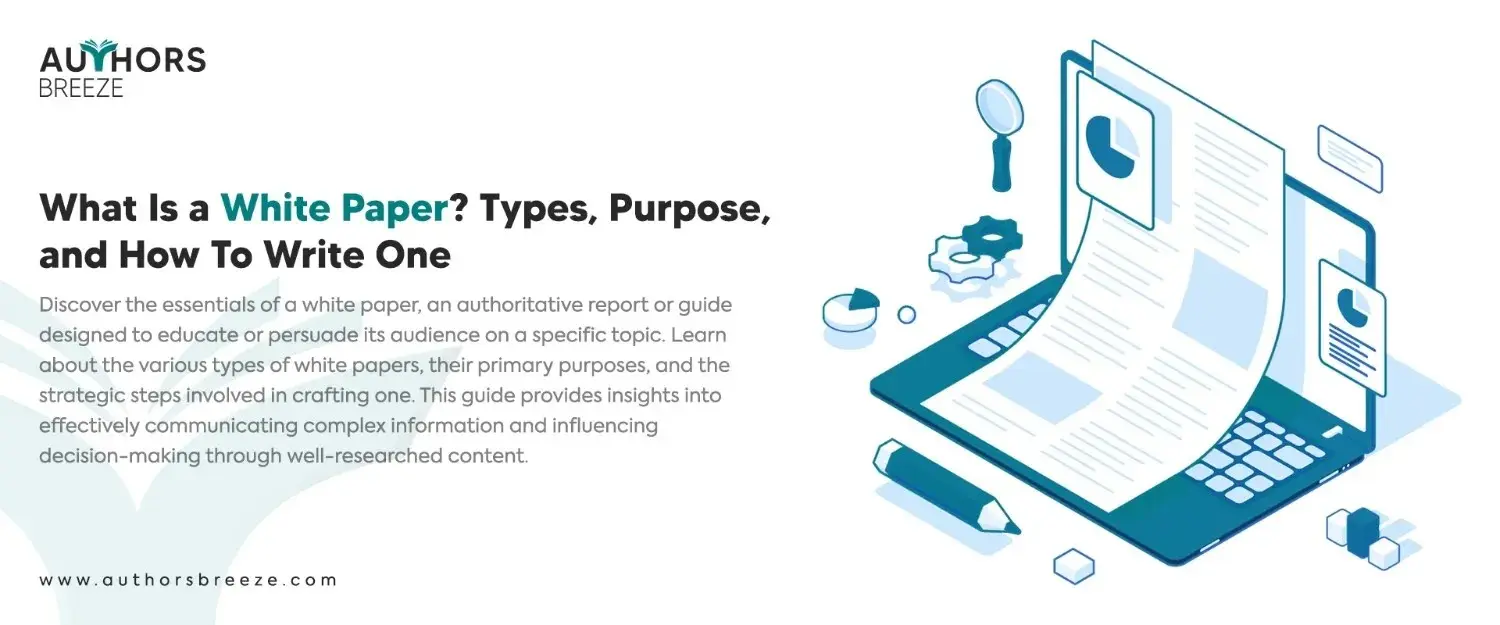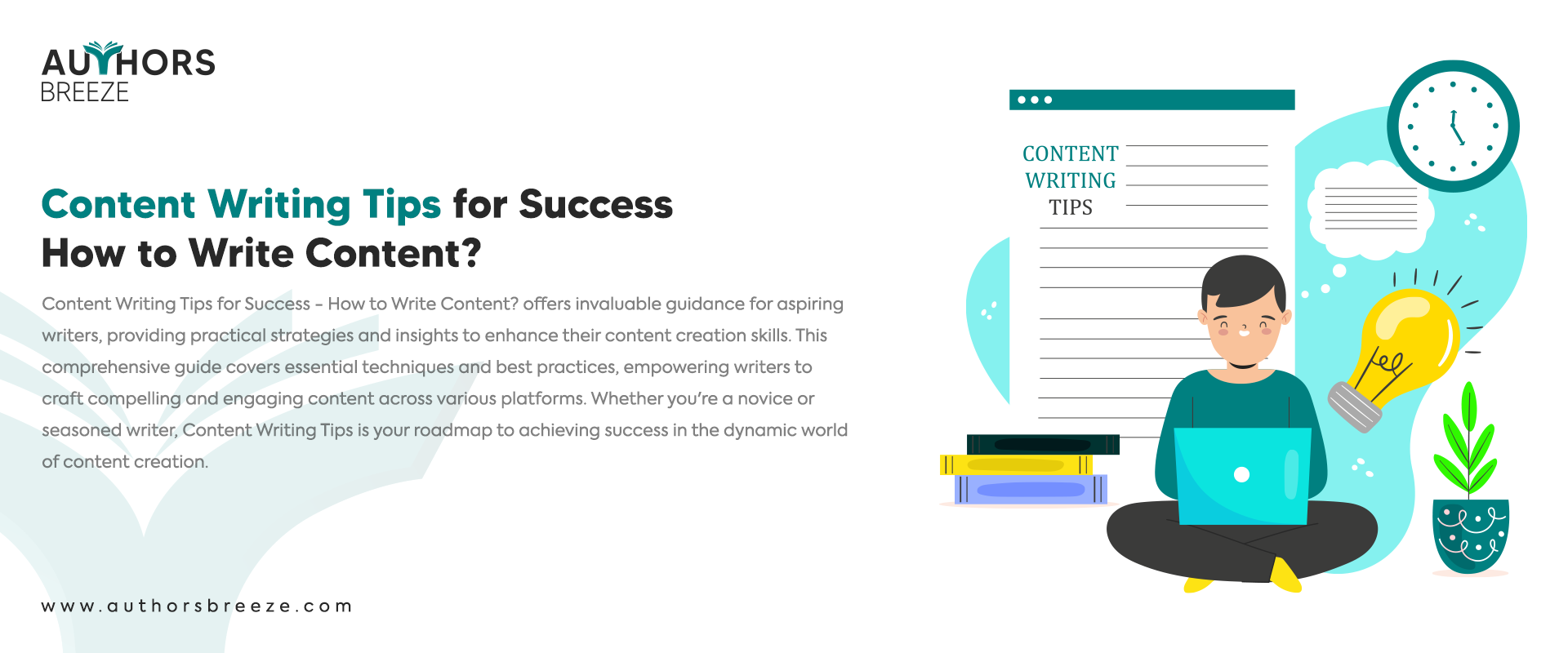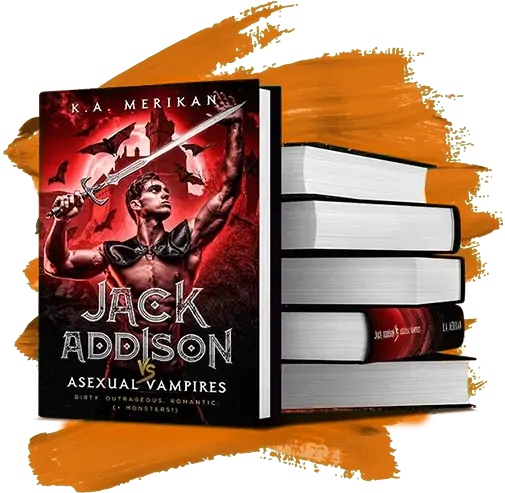Key Takeaways: Types of Content Writing
- Content writing delivers messages to the audience, and there are many types of content writing.
- Copywriting involves persuasive writing in order to motivate people to take action.
- Creative writing allows writers to use their imagination to create stories, poetry, and more.
- Technical writing is when writers explain complex topics in an easy-to-understand way.
- Ghostwriting is writing content for someone else who gets the credit, such as books and speeches.
- Academic writing focuses on formal writing for educational content.
- SEO content writing aims to create content that ranks well in search engines.
- Blog writing involves writing articles on various topics for websites.
- Email writing focuses on crafting clear and direct messages for effective communication and engagement.
- Long-form content writing offers a detailed exploration of subjects in over 1,000 words.
- Web content writing creates specific online content to both engage audiences and attract business.
- Feature writing offers in-depth articles on trends, people, and issues.
- Social media writing entails crafting content for social platforms.
- News writing reports on current events with accuracy, brevity, as well as clarity.
- Business writing generates professional content for business purposes, such as reports and proposals.
Fulfill Your Content Needs
Authors Breeze is the leading writing and publishing company that can help you with any type of content writing
Introduction to Types of Content Writing
Content writing is the core of marketing. It is often considered the “aorta” of digital marketing and online presence. The aorta is the main artery in the human body that supplies oxygenated blood to the circulatory system. Similarly, content serves as the primary channel through which businesses and people can convey their value proposition and engage with their audience.
Content writing helps you connect with your audience. There are many ways to communicate with your audience. Therefore, there are different types of content writing. If you want to persuade readers, then copywriting is your go-to option. If you want to establish your brand voice, blogging is key. For direct communication, email writing can strengthen your relationship with your audience on a personal level.
What are the Types Of Content Writing?
Content writing has a wide array of formats and styles. In addition, it caters to various platforms, audiences, and objectives. So, let’s look at some of the top types of content writing:
Copywriting
“Copy is not written. Copy is assembled.” – Eugene Schwartz.
Copywriting is a most popular type of content writing where you use persuasive writing to encourage people to take action. For example, you convince readers to buy your book as an author. You will see the use of copywriting in the following:
Advertisements and Sales Copy
This type of content writing is designed to grab attention fast and convince people to take action, whether it’s buying a product, signing up for a service, or clicking a link.
For example:
“Don’t like stains on your clothes? Our wipes make them disappear quickly. You don’t have to scrub! Get some and keep your clothes clean.”
Website and Landing Page Copy
Your website is like your online storefront, and the copy is the friendly salesperson welcoming visitors. It should be clear, and engaging, and guide users toward taking action, whether that's making a purchase, signing up, or learning more.
For instance:
“Looking for the perfect book cover design services? At Authors Breeze, we design covers that make your story shine. From fantasy to nonfiction, we bring your vision to life. Let's create something magical. So, get started today!”
Email Marketing Campaigns
Emails are like personal letters to your customers. They should feel engaging, not pushy, and encourage readers to open up, read, and take action. Email marketing can be used for promotions, newsletters, product launches, and follow-ups.
For example:
“Subject: Your Next Bestseller Needs This!
Hey [First Name],
Your book deserves a marketing that turns heads. For a limited time, we're offering 30% off all book marketing services. Let's make your masterpiece stand out! Claim your discount now—the offer ends soon.”
Social Media Ads and Promotional Posts
Social media is like a busy marketplace. So, you need to stand out in just a few seconds. These ads are short, visually appealing, and drive immediate engagement or sales.
For instance:
“Want to work out more? FitTrack can help! It’s an app that makes exercise easy and it works. Download it and get your first month free!”
According to data compiled from Payscale and Salary.com, 80% of copywriters make between $35k and $65k annually. So, if you are confused about which one to choose between types of content writing, this statistic can help you clear your confusion.
To become a copywriter, you need persuasive, solid writing, an understanding of target audience psychology, clear calls to action, and knowledge of marketing principles. In addition, you can enroll in content writing courses to hone your skills.
Creative Writing
“Creativity is allowing yourself to make mistakes. Art is knowing which ones to keep.” – Scott Adams.
Creative writing is an art that lets writers use their imagination to add personality and creativity to their work beyond just technical or traditional writing styles. Primarily, writers use their creativity in the following:
Novels and Short Stories
A novel is a long, detailed story with a structured plot, deep character development, and multiple themes. It takes readers on a journey, immersing them in new worlds, whether real or imagined. A short story, on the other hand, is a bite-sized fiction piece. That is quick, impactful, and usually centered around one main event or character.
For example:
“Harry Potter by J.K. Rowling creates a magical universe filled with wizards, adventure, and good vs. evil battles.”
“The Lottery by Shirley Jackson is a short yet chilling tale that keeps readers on edge with its shocking twist.”
Poetry and Plays
Poetry is all about rhythm, emotion, and artistic expression. It plays with words, rhyme, and metaphors to paint vivid pictures in the reader's mind.
A play is meant to be performed rather than read. It includes dialogue and stage directions, bringing stories to life through actors.
For instance:
“Shall I compare thee to a summer's day?” from Shakespeare's Sonnet 18 shows how poetry can be romantic, timeless, and deeply personal.
“Romeo and Juliet by Shakespeare tells the tale of two star-crossed lovers and is still performed worldwide centuries later.”
Also Read: “All About the Writing Style of William Shakespeare”
Screenplays for Movies or Television
A screenplay is the written foundation of a movie or TV show. It includes dialogues, scene descriptions, and character actions, guiding directors and actors in bringing a story to life visually.
TV screenplays follow a similar structure but are divided into episodes, often focusing on character-driven storytelling.
For example:
“The screenplay of Inception by Christopher Nolan uses detailed storytelling to create a mind-bending sci-fi film about dream manipulation.”
“The script of Breaking Bad builds tension, character arcs, and plot twists, making it one of the most gripping TV shows ever.”
Narrative Non-Fiction
Unlike regular nonfiction, narrative nonfiction tells real-life events in a storytelling format. It includes detailed descriptions, character emotions, and a structured narrative—making facts as compelling as a novel.
For instance:
“Educated by Tara Westover is a memoir that reads like a novel, detailing the author's journey from an isolated childhood to earning a Ph.D.”
Video Scriptwriting
A video script is like a screenplay but often shorter, tailored for ads, YouTube videos, corporate presentations, or social media content. It includes dialogues, narration, and visual cues to engage viewers in a short period.
For example:
A viral TikTok script: “Ever wondered why your coffee tastes different every day? Let's break it down in 60 seconds!”
Can you think outside the box? Does your brain let your imagination go wild? Then, creative writing is the perfect choice for you. In order to be a creative writer, you must be able to develop engaging characters and plots. In addition, you need strong storytelling skills and mastery of language.
Technical Writing
“Technical writing is a continuous process of learning, carefully gathering, sifting, organizing, and assessing, all while trying to craft something that makes sense for a user.” – Krista Van Laan.
So, what is technical writing? Technical writing is when people write about complex subjects, such as computer software or medical tips, in a way that’s easy to understand. A technical writer mostly writes the following:
User Manuals and Help Documents
A user manual or help document explains how to use a product or service. It provides step-by-step instructions, diagrams, and troubleshooting tips to assist users in navigating a device, software, or tool.
For instance:
“A smartphone manual explaining how to turn on the device set up Wi-Fi, and troubleshoot battery issues.”
FAQs
FAQs (Frequently Asked Questions) answer common customer inquiries straightforwardly. They are designed to save time by providing instant solutions.
For example:
A website's FAQ section might include the following:
“How do I reset my password?”
“What is your return policy?”
Troubleshooting Guides
A troubleshooting guide takes problem-solving further by providing step-by-step solutions for specific technical issues.
For instance:
“A printer troubleshooting guide may include:
Problem: The printer isn't printing.
Solution: Check the ink levels → Restart the printer → Reinstall the drivers.”
Technical Reports
A technical report is a detailed document that presents data, research findings, or project analysis in a structured format. It's often used in engineering, science, and business to document processes, results, and recommendations.
For example:
“A software company's performance report that analyzes app stability, crash rates, and recommended fixes.”
Product Specification Sheets
A Product Specification Sheet (spec sheet) is a concise document that lists the technical details, features, and requirements of a product. It helps buyers, engineers, and sales teams understand what the product offers without needing a full manual.
For example:
“Dell XPS 15 (Model 9520)
Processor: Snapdragon 8 Gen 2
RAM: 8GB / 12GB
Storage: 128GB / 256GB
Display: 6.7” OLED, 120Hz
Battery Life: 5000mAh, fast charging
Dimensions & Weight – Helps with physical compatibility and handling.”
The median annual wage for technical writers was $79,960 in May 2022. Do you have the ability to convey complex ideas or instructions in an easy-to-understand way for readers? If so, you can be a perfect fit for technical writing. You just need subject matter expertise, strong technical skills, and attention to detail.
Make Your Content Errorless
If you are looking for proofreaders to help you spot mistakes in your manuscripts and improve their quality, then we are here for you
Ghostwriting
“The act of memory is an act of ghostwriting.” – David Mitchell.
Ghostwriting is where you get paid to write a book or any content for someone else, who then gets to be called the author without your name appearing anywhere. Ghostwriters usually write:
Books (Fiction & Non-Fiction)
Many bestsellers are written by ghostwriters! From celebrity memoirs to best historical fiction series, a ghostwriter helps an author shape their ideas into a polished manuscript.
For instance:
“A famous athlete wants to write an autobiography but doesn't have the time or writing skills. So they hire a ghostwriter to do it.”
Articles & Blog Posts
Chief executives, public figures, and thought leaders often don't have time to write but need a strong online presence. Ghostwriters create expert-level content in their voices.
For example:
“A tech CEO needs insightful LinkedIn articles to establish credibility in AI advancements.”
Speeches & Presentations
From political speeches to TED Talks, ghostwriters craft words that sound natural and persuasive while aligning with the speaker's personality.
For instance:
“A startup founder gives a powerful keynote speech written by a ghostwriter.”
Social Media Content
High-profile individuals and brands need engaging posts to stay relevant, but they don't always write them themselves.
For example:
“A celebrity's Twitter or Instagram captions are written by a ghostwriter to maintain their voice and brand.”
Also Read: “Why Hire the Best Ghostwriting Services from Authors Breeze?”
In the content writing industry, 60% of the population is ghostwriters, and about 40% are Notedwriters (Recognized writers). If you are new to the writing world, then ghostwriting can be a lucrative option for you as you can learn from the people you ghostwrite for and because it is less stressful.
However, it would be best if you had adaptability to different styles, the ability to capture the voice of another person, discretion, and strong research skills.
Looking for Ghostwriters?
Authors Breeze is the leading ghostwriting company that provides exceptional writers who write for you and ensure your ideas and voice shine
Academic Writing
“The best way to become acquainted with a subject is to write about it.” – Benjamin Disraeli.
Academic writing is a formal way of writing for universities and scholarly works.
For example:
“The content you will find in journals and educational books.”
In addition, it is how you should write your essays, research papers, and dissertations. An academic writer helps students in the following:
Research Papers & Journal Articles
These are detailed studies written for scholarly journals, focusing on original research, analysis, and conclusions.
For example:
“A researcher publishes a paper on climate change impacts in a scientific journal.”
Theses & Dissertations
These are in-depth, structured research projects required for Master's and Ph.D. degrees, demonstrating a student’s expertise in a field.
For instance:
“A Ph.D. student submits a dissertation on artificial intelligence ethics.”
Conference Papers & Presentations
Academic writers help researchers prepare papers and slide decks for international conferences, ensuring their findings are communicated clearly.
For example:
“A medical researcher presents a study on cancer treatment advancements at a global conference.”
Literature Reviews
These summarize and analyze existing research on a topic, forming the foundation of academic studies.
For instance:
“A literature review on the effects of remote learning on student performance.”
Academic writing is not about spoon-feeding students but to help them. According to a research article, 58% of students say guidance from someone in a similar study area can strengthen their academics.
So, if you want to assist students, you should have academic excellence, critical thinking, the ability to cite sources properly, and adherence to specific academic styles (APA, MLA, etc).
SEO Content Writing
“SEO isn’t about content creation. It’s about content promotion.” – Brian Dean.
SEO writing is creating content with specific keywords to show up on the first page of search engines such as Google. An SEO writer makes sure the content is of good quality and organized for easy reading. SEO writers are primarily responsible for the following:
Keyword-Rich Articles
These are articles packed with specific keywords that help them rank higher on search engines. The goal is to provide valuable content while naturally incorporating important search terms.
For example:
“A fitness website publishes an article titled “Best Home Workouts to Lose Belly Fat” and includes keywords like best home workouts, lose belly fat fast, exercises for a flat stomach, and quick fat-burning workouts throughout the article. This makes it more likely to appear when people search for those terms.”
Blog Posts Optimized for Search Engines
These are blog posts written with SEO (Search Engine Optimization) in mind. They use structured headings, internal links, external links, and keywords strategically placed to improve visibility on Google.
For instance:
A travel blog post titled “Top 10 Affordable Beach Destinations for 2024” includes keywords like affordable beach vacations, best budget travel spots, and cheap tropical getaways. The article also links to airline deals, travel guides, and other related blogs to enhance SEO.
Product Descriptions
Short, compelling descriptions that highlight a product's features, benefits, and unique selling points while including relevant keywords.
For example:
For a skincare brand selling a moisturizer:
“Hydrate and glow with our Vitamin C-infused Daily Moisturizer. Designed for all skin types, this lightweight formula nourishes, brightens, and keeps your skin soft all day. Say goodbye to dryness and hello to radiance!”
Category Pages for E-commerce Sites
Category pages help shoppers browse similar products by grouping them under a common theme. These pages should be SEO-friendly with clear descriptions and relevant keywords.
For instance:
A fashion e-commerce site has a “Women's Summer Dresses” category page. The content includes:
“Explore our latest collection of trendy women's summer dresses, from breezy maxi dresses to casual sundresses. Perfect for beach trips, brunch outings, and warm-weather adventures.”
Landing Pages Designed for Specific Search Queries
These are web pages built to match a specific search query or ad campaign. They are designed to convert visitors into customers or subscribers.
For example:
A digital marketing agency runs a Google ad for “Affordable Facebook Advertising Services.” Clicking the ad leads users to a landing page that says:
“Boost Your Business with Expert Facebook Ads! Get targeted, high-converting ads at an affordable price. Book a free consultation today!”
Infographic Writing
Infographic writing turns complex information into visually engaging, easy-to-digest content. These short-form text blocks summarize key points, statistics, and insights while keeping readers engaged.
For instance:
A digital marketing infographic on SEO trends might include:
📌 Title: “SEO in 2024: What You Need to Know”
📊 Statistic: “75% of users never scroll past the first page of Google.”
🛠 Tip: “Use long-tail keywords like ‘best SEO tools for beginners' to rank for specific search queries.”
93% of users begin their online experience with a search engine. It showcases how important it is to write content for search engines. If you want to rank well on search engines, you should be able to produce fantastic content. This is where SEO writing becomes relevant.
Do you want to become an SEO content writer? Then, you must have strong content writing skills. For example, you should be able to do keyword research. In addition, you should be familiar with on-page optimization and search engine algorithms. Also, the ability to write engaging content that ranks well is a must.
Content writing tools such as keyword planners and SEO analysis software are invaluable for writers to produce content that resonates with both readers and search algorithms.
Need SEO-Optimized Articles?
Engage your audience and drive more traffic with our keyword-enriched and optimized articles for search engines
Blog Writing/Blogging
“Don’t focus on having a great blog. Focus on producing a blog that’s great for your readers.” – Brian Clark.
Blog writing is crafting and sharing articles, photos, or digital media on a website, which can belong to a person or a company, often focusing on detailed topics. A blogger writes various types of blogs, such as:
Personal or Corporate Blogs
A personal blog reflects individual experiences, while a corporate blog enhances a company's online presence.
For example:
“A food blogger shares recipes, while a tech company posts updates about AI trends.”
Guest Posts on Other Blogs/Websites
Writing for another blog increases visibility, credibility, and audience reach.
For example:
“A finance expert contributes an article on “Smart Investing Tips” to a business website.”
How-To Guides & Tutorials
Step-by-step content that teaches readers how to do something.
For instance:
“What is Direct Characterization in Literature?” explains everything from what it is, its importance, and how to use it.
Opinion Pieces & Editorials
These blogs express personal perspectives or expert opinions on trending topics.
For example:
“Why Remote Work is the Future” explores the pros and cons of working from home.
Among 1.9 billion websites online, today, there are over 600 million blogs. There are over 32 million bloggers in America as of 2024. So, in case you choose to be a blogger, you need to be the best to stand out. For this, you should have a conversational writing style and the expertise to develop a consistent brand voice, audience engagement, and content promotion skills.
Our blog content writers managed an author's blog with engaging content on book reviews, author interviews, and the publishing industry. As a result, we grew the blog’s audience to 5,000 monthly readers through consistent and informative content.
Also Read: “Effective Blog Writing Tips for Authors & Storytellers”
Email Writing
“Email has an ability many channels don’t: creating valuable, personal touches—at scale.” – David Newman.
If we talk about email writing, it is where we write and manage messages electronically, favored for its speed and low cost. In addition, it is crucial to craft emails clearly and directly to engage others and get responses. Writing emails can involve the following:
Newsletters
Regularly scheduled emails that share updates, insights, or valuable content with subscribers.
For Example:
“A monthly author newsletter from a book writer with writing tips and success stories.”
Welcome Emails for New Subscribers/Customers
The first email a brand sends after someone subscribes or makes a purchase.
For example:
“Welcome to Our Community! Here's 10% Off Your First Order.”
Transactional Emails
Automated emails triggered by an action, like purchases, shipping, or password resets.
For instance:
“Your Order Has Been Shipped! Here's Your Tracking Number.”
Promotional Emails & Special Offers
Sales-driven emails are designed to convert readers into customers.
For example:
“Limited-Time Offer! Get 50% Off This Weekend Only.”
For crafting effective emails, the following skills are required:
- Clear and concise communication
- Compelling subject lines
- A/B testing for best results
- Personalization
4.24% of email traffic leads to purchases. On the other hand, only 2.49% of search traffic and 0.59% of social traffic do the same. We recently experienced that magic with an email sequence that took a prospect from mildly interested to a purchase.
Crafting captivating email sequences promoting new book releases for our company was tricky. However, we infuse subject lines with intrigue and incorporate personalized recommendations based on past purchases. As a result, it significantly boosted book sales.
Long-Form Content Writing
“Business plans with too much detail, books with too much proof, politicians with too much granularity … it seems as though more data is a good thing because data proves the case.” – Seth Godin.
Long-form content refers to detailed writing that is over 1,000 words, usually up to 7,500. It provides an in-depth look at complex subjects to offer valuable information to readers. Long-form writing is a broad category that includes the following:
In-Depth Blog Posts & Articles (2,000+ Words)
These pieces thoroughly explore a topic, offering detailed research, case studies, and actionable insights.
For instance:
“Behind the Bestsellers: Best Book Marketing Campaigns of 2024” covers strategy, tools, and best practices in a single resource.
E-books
These digital books break down complex subjects into easy-to-follow chapters. They are often used as lead magnets or industry resources.
For example:
“A startup releases an e-book titled “How to Scale Your Business in 2024” to attract new customers.”
White Papers
These research-based documents present data, analysis, and expert insights on industry-specific issues, usually in a persuasive or informational format.
For instance:
“A cybersecurity company publishes a white paper on “The Future of AI in Cybersecurity.”
Comprehensive Guides & How-Tos
Step-by-step resources that provide practical knowledge and solutions to a problem.
For example:
“The Complete Guide to SEO in 2024” explains keyword research, ranking strategies, and algorithm updates in detail.”
Research Studies & Reports
Data-driven content that presents findings from surveys, experiments, or market research.
For instance:
A financial report analyzing “Trends in E-commerce Sales Over the Last Decade.”
According to a study by Content Hacker:
“Long-form content brought in 62x more ideal customers than short-form content.”
“Long-form content brought 198.75% more revenue.”
“Customers who found them through long-form content had ZERO disputes and wanted ZERO refunds.”
The above study tells us that long-form content is as effective as ever. So, are you capable of doing thorough research? Do you know content writing tips on how to write content? Moreover, do you have excellent content organization skills, storytelling, and strong editing and proofreading expertise? Then, you can quickly produce detailed content.
Web Content Writing
“Web content is the meat in the sandwich, not the icing on the cake.” – Karen McGrane.
A website content writer crafts specialized content for websites to engage a specific audience and attract business. Website content writing is a type of copywriting focused on online relevance. A web copywriter creates content for the following pages of the website:
Home Page
The first impression matters! This page briefly introduces the brand and its value, guiding visitors to explore further.
For example:
“Welcome to XYZ Tech – Your Partner in Innovation. Explore our AI-driven solutions today.”
About Us Page
Tells the brand's story, mission, and values, helping visitors connect with the business.
For instance:
“Founded in 2015, we've helped over 10,000 businesses scale with cutting-edge marketing strategies.”
Service/Product Pages
Clearly explains what's being offered, highlighting features, benefits, and pricing.
For example:
A digital agency's service page for SEO includes: “Boost your rankings with data-driven SEO strategies tailored for your business.”
Landing Pages
Standalone pages designed for marketing campaigns, leading visitors to take action (sign up, buy, or download).
For instance:
Get 50% Off Today! Download Your Free E-book Now.
FAQs
Answers common questions to reduce confusion and improve user experience.
For example:
“How long does shipping take? – Orders are delivered within 3-5 business days.”
A writer interested in writing for the web should understand web design principles, write scannable content, and have knowledge of basic HTML and SEO best practices.
Research shows that 77% of Internet users read web content regularly before making a purchase-related decision. We revamped an author’s website and showcased a writer’s unique journey and personality. This human touch led to a massive increase in ebook purchases.
Convert Your Audience to Customers
If you want to turn your prospects into leads, then Authors Breeze should be your choice for author website and website content writing.
Feature Writing
“A feature story should begin with velocity. It shouldn’t just mumble and meander.” – Joel Achenbach,
Feature writing is a recognized journalism style that focuses on detailed articles about current trends, notable people, and critical issues. It offers more depth than typical news stories. You will find feature writing in the form of:
Magazine & Newspaper Feature Articles
These explore topics in-depth, often using narrative storytelling, interviews, and analysis.
For example:
A National Geographic feature on “The Disappearing Glaciers of Antarctica.”
Human Interest Stories
Stories that focus on emotional, inspiring, or extraordinary personal experiences.
For instance:
“A feature on a cancer survivor who ran a marathon to raise awareness.”
Profile Pieces on Individuals or Organizations
A deep dive into the life, work, or impact of a person or company.
For example:
“A Forbes feature on a young entrepreneur revolutionizing sustainable fashion.”
In-Depth Explorations of Trends or Issues
These articles analyze significant societal, cultural, or industry trends, offering expert insights.
For instance:
A Wired article on “How AI is Changing the Future of Work.”
Are you capable of doing in-depth research and conducting multiple interviews? Are your storytelling skills strong enough to capture the reader’s interest? That being the case, feature writing is for you. Feature writers are 79% more likely to work at private companies than education companies.
Social Media Writing
“Content is fire, social media is gasoline.” – Jay Baer.
Social media content writing combines storytelling with data and strategic communication to engage customers, helping to grow an online following and enhance brand visibility. A social media manager writes the following:
Posts and Updates for Social Media Platforms
These are text-based or multimedia posts designed to inform, entertain, or promote a brand on platforms like Facebook, Twitter, Instagram, and LinkedIn. They can be announcements, tips, fun facts, or even questions to encourage engagement.
For example:
Twitter post for a fitness brand:
“Struggling to stay motivated? Here's your reminder: Progress is progress, no matter how small. Keep pushing! 💪 #MondayMotivation #FitnessGoals”
Social Media Ad Copy
This is persuasive, concise writing used in paid advertisements to capture attention, drive clicks, and increase conversions. Social media ads often use strong hooks, benefits, and clear calls to action.
For instance:
Facebook ad for an online course:
Want to turn your passion into profit? 🚀 Enroll in our ‘Start Your Own Business' course today and take the first step toward financial freedom. Limited spots are available! Sign up now. 👇
Captions for Images and Videos
Captions add context, personality, and engagement to visual content like photos, graphics, and videos. A great caption complements the image while encouraging interaction.
For example:
Instagram caption for a coffee shop:
“Monday blues? We've got just the thing. ☕ Come grab your favorite latte and start the week right! Tag your coffee buddy below! 👇 #CoffeeLover #CafeVibes”
Stories and Live Video Content
Stories and live videos are real-time, engaging content that disappears after 24 hours (on platforms like Instagram, Facebook, and Snapchat). They create a sense of urgency and exclusivity.
For instance:
Instagram Story for a fashion brand:
(Video of a behind-the-scenes photoshoot)
📢 Text overlay: “Sneak peek of our summer collection! 🌞 Drop a 🔥 if you're excited! #ComingSoon”
If you are interested in crafting content for social media, then you should have the following:
- Conversational and engaging writing style
- Understanding of different social media platforms and their audiences
- Expertise in crafting concise messages.
There are at least 8.1 billion people in the world, and over 4.95 billion of this population uses social media. Therefore, social media is the best way to reach maximum readers and connect with your audience.
Our social media posts for a language learning book didn’t just promote a book. It created a community of self-learners connected around the author. We shared inspiring stories of users conquering new languages. As a result, the author reached readers interested in learning different languages.
Promote Your Book With Us
Start your book advertising campaign with us. We utilize expert strategies to get your book noticed and loved.
News Writing
“Literature is the art of writing something that will be read twice; journalism is what will be grasped at once.”- Cyril Connolly.
Journalism or news writing, used in newspapers, radio, and TV, focuses on the audience, tone, and the ABCs: Accuracy, Brevity, and Clarity to report stories effectively. A journalist should be able to write:
News Articles & Bulletins
These provide factual, timely updates about current events, following the inverted pyramid structure (most important details first).
For example:
A breaking news report:
“A 6.2-magnitude earthquake struck California early Monday morning, causing power outages and structural damage in several areas. Emergency services are responding.”
Press Releases
These are official announcements from companies, organizations, or government bodies, designed to inform the media.
For instance:
A tech company announces a product launch:
“XYZ Tech unveils its latest AI-powered smartphone, featuring a revolutionary battery that lasts 48 hours on a single charge.”
Investigative Reports
In-depth journalism that uncovers hidden truths, corruption, or significant societal issues through extensive research and fact-checking.
For example:
An investigative piece on corporate fraud reveals:
“Leaked documents show that ABC Corp. misled investors about its environmental impact for years, despite publicly claiming sustainability efforts.”
News Analysis & Commentary
These go beyond reporting facts, providing expert insights, opinions, and background information on a story.
For instance:
A political analyst's take on an election:
“The recent election results signal a major shift in public sentiment, with younger voters influencing key battleground states more than ever before.”
Writing news means the following:
- Accuracy
- Objectivity
- Competence to meet deadlines.
- Solid research skills.
- Clear and concise writing style.
According to Cision’s 2023 State of the Media report, the number one priority of journalists is accuracy. In addition, 27% of journalists faced challenges in maintaining credibility as a trusted source. Hence, your biggest concern as a news writer will be being reliable and trustworthy.
Business Writing
“Your writing doesn’t have to be boring just because it’s for other businesses. Businesses have people who read stuff.” – Valeria Maltoni.
Business content writing means creating marketing material, such as proposals and financial reports, with information relevant to the business. A business development executive or manager does most of the writing work for firms, for example:
Business Plans
A structured document outlining a company's goals, strategies, and financial projections.
For example:
“A startup prepares a business plan to secure investment for its new app.”
Reports & Proposals
Reports analyze data and present findings, while proposals pitch ideas or solutions to clients or investors.
For instance:
“A sales report showing quarterly revenue growth or a proposal for a new marketing campaign.”
Brochures & Flyers
Marketing materials that promote a product, service, or event in a visually engaging way.
For example:
“A real estate firm's brochure showcasing new property listings.”
Case Studies
Real-world examples of how a company solved a problem for a client, are used to build credibility and attract new business.
For instance:
“A case study detailing how a digital agency increased a client's website traffic by 300%.”
Corporate Communications
Internal and external communications such as press releases, emails, newsletters, and employee memos.
For example:
“A company-wide email announcing a leadership change or a press release about a product launch.”
Report Writing
Formal documents that summarize data, insights, and recommendations for decision-makers.
For instance:
“An annual financial report for shareholders detailing company performance.”
A 2023 survey estimates that bad business writing or, you can say, ineffective communication costs American businesses $2 trillion annually. Therefore, a business writer should have a firm grip on business principles, knowledge of target audience needs, and persuasive writing skills. In addition, they should be able to write in a professional tone.
Importance of Content Writing
Helps People Find You
When you search for something online, you use keywords. Good content writing uses those keywords, so search engines like Google can find your website or profile and show it to people.
Explains What You Do
Whether you’re selling a product, offering a service, or just sharing information, content writing helps you clearly explain what you’re about. It’s like having a friendly guide.
Content Builds Trust
If you provide helpful and informative content, people will start to see you as an expert. This builds trust, and people are more likely to do business with someone they trust.
Helps You Connect With People
Good content is engaging. It makes people feel like you’re talking directly to them. This connection is important for building relationships with customers or followers.
Helps You Sell Things
Whether it is a physical product, a service, or an idea, well-written content can persuade people to take action. This could be buying something, signing up for a newsletter, or simply sharing your content with others.
Keeps Your Online Presence Fresh
Regularly posting new content keeps your website or social media profiles active and interesting.
How to Choose the Type of Content Writing?
From various types of content writing, choosing one for your writing career can depend on your preferences, interests, and strengths! Moreover, your natural inclinations can help you make this decision.
Are you good at persuasive writing? Then, copywriting is for you. Technical writing can be your go-to option if you have a knack for explaining complex ideas and concepts clearly and simply. Blogging is excellent for those who enjoy sharing knowledge or insights in a conversational tone.
Do you have a creative edge? Can you tell compelling stories? In that case, creative writing is what suits you. Academic writing is ideal for those who excel in educational research and formal writing. If you know how to write concisely and impartially, often under tight deadlines, news writing is the perfect field.
You can also consider the market demand. Some niches may be oversaturated. On the other hand, others might have a high demand for content writers. Research job postings, read industry reports, and talk to professionals in your network. As a result, you can gauge where your interests could meet demand.
How to Choose Content for Your Business?
There are many types of written content, such as articles, blogs, books, white papers, and emails. Here is a guide on how to select the best content:
Identify Your Goal
First, clarify what you want to achieve with your content. Different goals require different types of content writing.
For example:
“If you’re going to educate your audience, then consider how-to guides, tutorials, or educational articles.”
Product descriptions, sales copy, or landing pages might be more appropriate if you want to sell.
In case you want to inform your readers, news articles, press releases, or reports can provide updates and important information.
If you like to engage your customers, blogs, interviews, and opinion pieces can foster community and conversation.
Understand Your Audience
Knowing your audience is crucial. Different demographics and audience types may prefer different styles and formats of content. So, consider their demographics, such as age, location, gender, and interests. It can influence content preference.
Take notes of their pain points. What problems does your audience face that your content can solve? Moreover, keep the engagement level. How familiar is your audience with your topic? This can dictate the complexity and depth of your content.
Choose the Right Format
Depending on your goal and audience, specific formats might work better.
- Articles and blog posts are They can be tailored to educate, inform, or entertain.
- White papers and ebooks are brilliant for in-depth exploration of topics, typically used to educate or generate leads.
- Case studies and testimonials are ideal for showcasing success stories and testimonials to build trust.
- Social media posts are short as well as engaging. They can capture attention and encourage sharing.
- Email newsletters are personalized content that you can aim at building relationships with your audience.
Consider SEO and Online Presence
SEO (Search Engine Optimization) is a significant factor if your content will be published online. Therefore, you need to choose content types that can also help improve your visibility on search engines:
- Use keywords naturally within your content.
- Create quality content that provides value.
- Include calls-to-action (CTAs) where appropriate to guide readers on what to do next.
Content preferences can change over time. So, you should evaluate the performance of your content regularly and adapt your content as per the changes. You can use analytics tools to monitor engagement, conversions, and other vital metrics.
In addition, feedback from your audience is valuable. It can provide helpful insights into how your content could be improved or what new types of content they would like to see.
Conclusion
We hope this comprehensive overview of the different types of content writing helps you identify the areas that best suit your interests and skills. If you dedicate yourself and learn continuously, you can excel in any field of content writing!
The world of content writing is vast. Moreover, it offers a variety of opportunities for aspiring writers. You can learn different types of content writing and the skills required for each. As a result, you can choose a path that aligns with your interests and strengths as well as position yourself for success in this growing field.
Learn content writing or hire the right kind of content writer with Authors Breeze. We have content writing professionals who are experts in their respective subject matters. So, if you have any queries or need any help, we are here to assist.
Frequently Asked Questions
What are the 4 basic writing styles in content writing?
There are four main writing styles writers usually employ:
- Persuasive
- Narrative
- Expository
- Descriptive
What are the 4 pillars of content writing?
The four pillars of content writing are:
- Structure
- Style
- Substance
- Strategy
What type of content writing is in demand?
There are many types of content writing that are popular right now. However, some of the most in-demand writers are:
- Social Media Writers
- Blog Writers/Blogger
- Technical writers
- Scriptwriters
- Copywriters
Convert Your Readers into Customers
Write content with the help of Authors Breeze and increase the chance of them becoming your customers.


